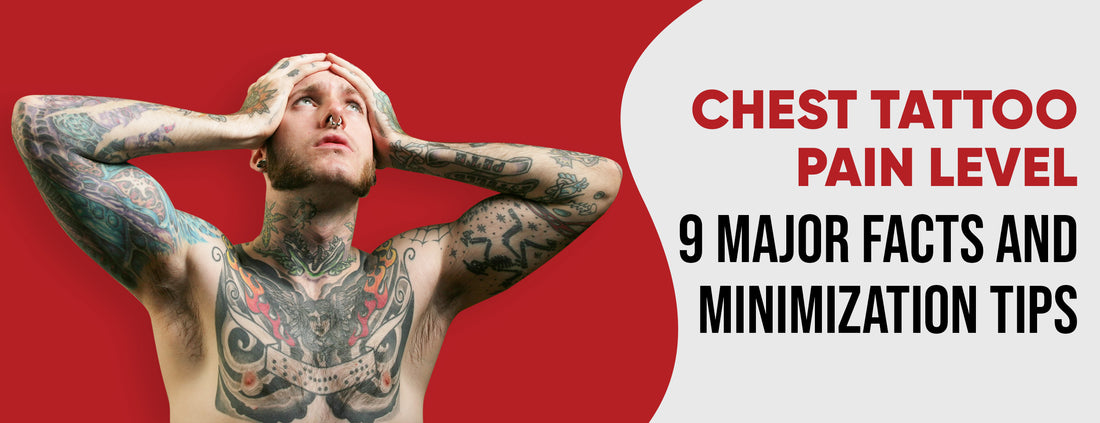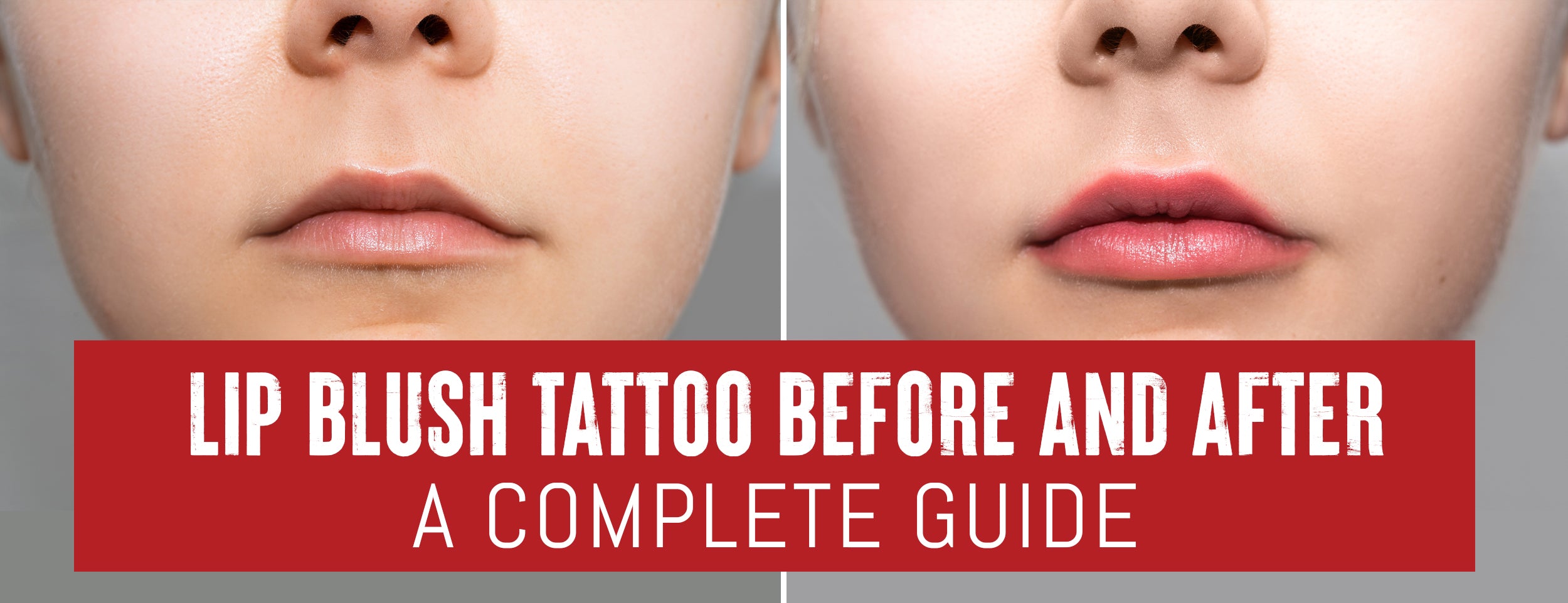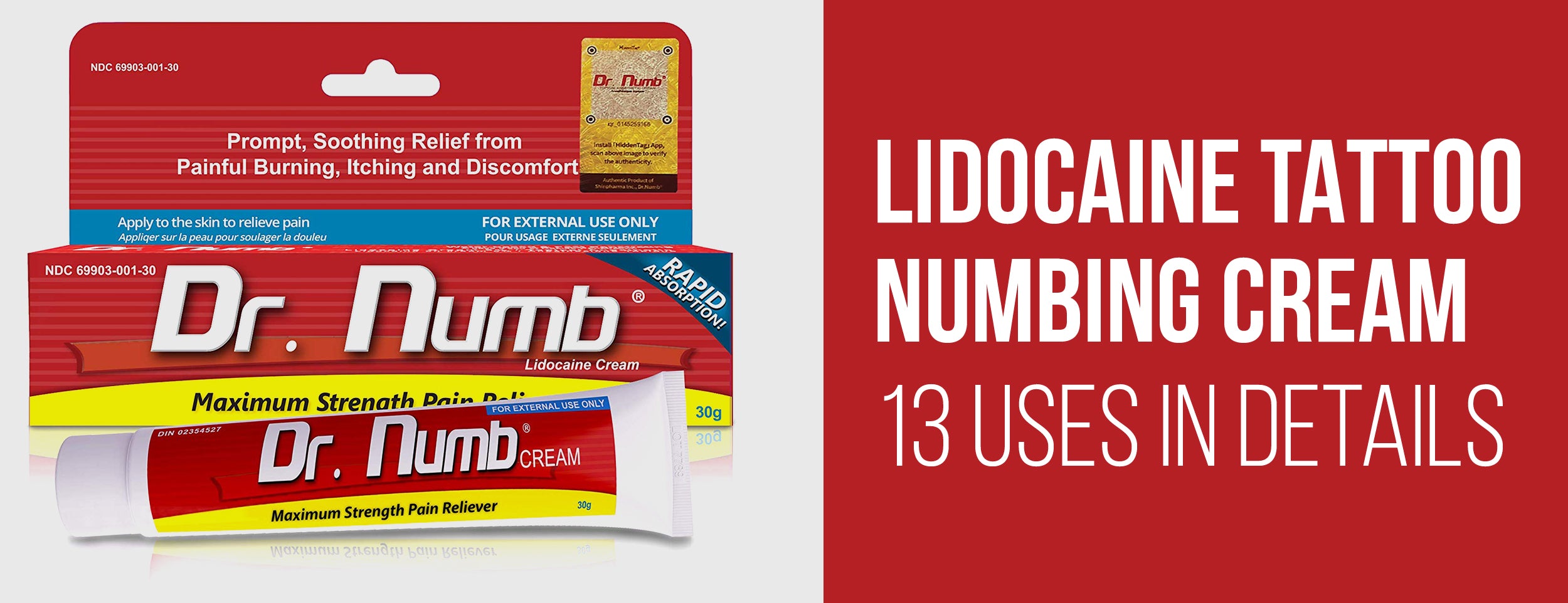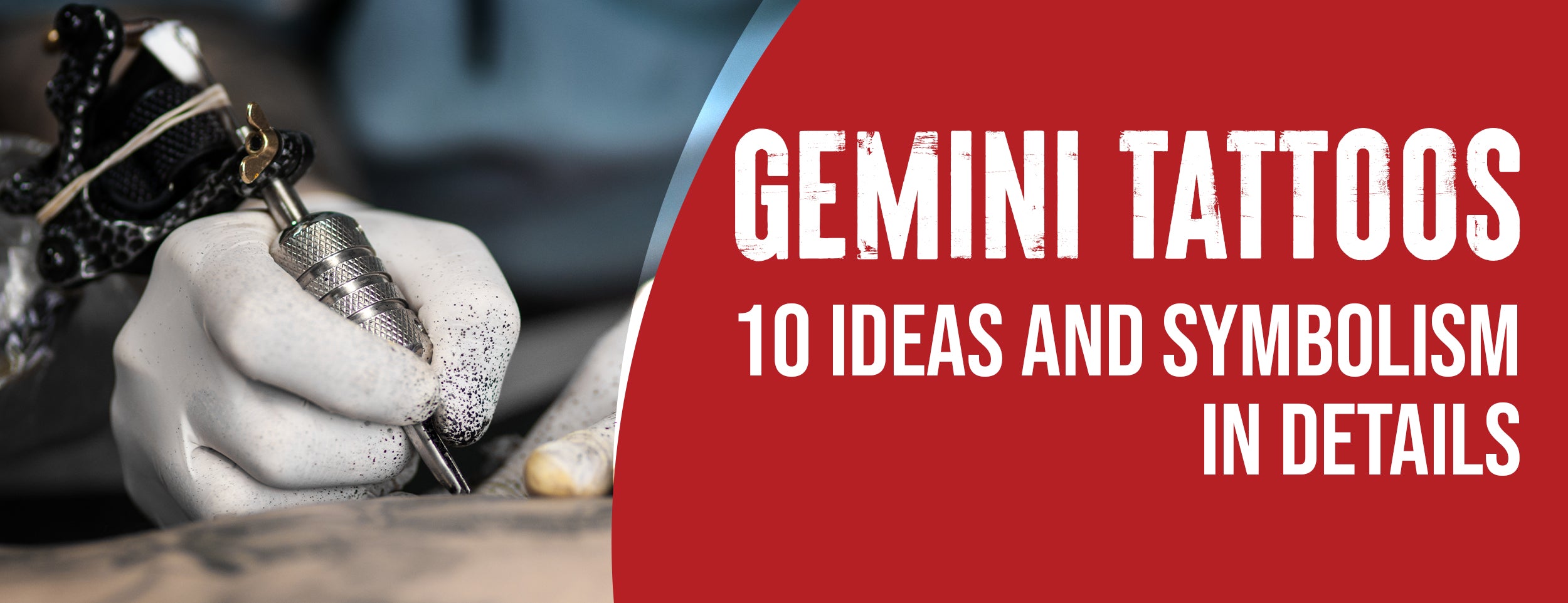Chest tattoos are one of the most painful places on the body to get tattooed because of the close presence of bone and a lack of fat in the area. The pain is often compared to constant tapping.
Based on reports from many individuals, chest tattoos are generally rated as an 8 out of 10 in terms of discomfort. This is likely due to the fact that the chest area is located near the ribs and sternum bone, making it a more sensitive area for tattoos.
As a tattoo artist or someone planning on getting a chest tattoo, understanding the pain levels associated with this type of tattoo is critical. It's essential to remember that your pain threshold, skin sensitivity, and the tattoo artist's technique can all impact your pain levels.
In this blog post, we'll explore the different causes of chest tattoo pain and valuable tips and aftercare advice to minimize discomfort during and after the process.
Factors that Affect Chest Tattoo Pain Level

Chest tattoo pain is a complex and multifaceted experience influenced by various factors. While some people may find chest tattoos intensely painful, others may find the experience relatively manageable. Some studies suggest that women may experience different pain levels than men.
Let's dive into the details to help you better understand the factors that contribute to chest tattoo pain for men and women:
Nerve Endings
The abundance of nerve endings in this area contributes to chest tattoo pain. A dense network of nerve endings lies beneath the chest, responsible for sending pain signals to the brain.
Chest tattoos are known for being more painful than tattoos on other parts of the body. Studies suggest chest tattoos, ribs, and back tattoos are the most painful.
Skin Thickness
The thickness of the skin also plays a significant role in chest tattoo pain. Thicker skin tends to be less sensitive to pain, while thinner skin tends to be more sensitive to pain because it tends to be thinner. The chest area can have both thick and thin skin, depending on the individual's body type and the specific location of the tattoo.
When it comes to the pectoral muscles, they are generally thicker and less sensitive than the skin around the collarbone or sternum, which can be thinner and less sensitive around the pectoral bone and sternum.
Individual Pain Tolerance
Pain tolerance also plays a vital role in chest tattoo pain. Everyone’s pain threshold is different. Some people are naturally more tolerant of pain than others. Stress, fatigue, and anxiety can also affect how much pain is experienced during a tattoo.
It’s important to remember that pain is subjective, and what feels painful to one person may not feel as intense to another. Women with a low pain tolerance may experience more discomfort during tattooing.
Size and Complexity of the Tattoo
The size and complexity of a tattoo design can also affect chest tattoo pain. Larger tattoos require more extended sessions, which can take a toll on the body and increase pain.
Tattoos with intricate designs or small details may require more meticulous work, leading to more discomfort. Simple designs with bold outlines tend to be less painful, while more complex designs with shading and fine lines can be more challenging.
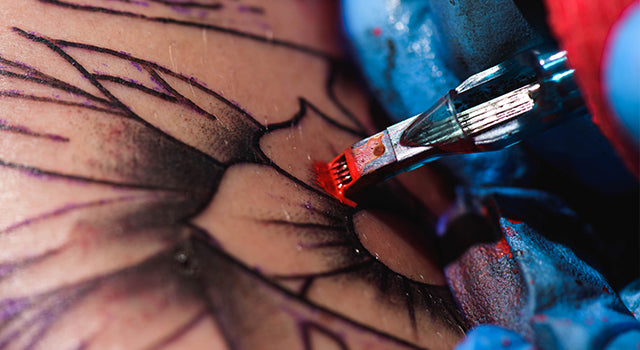
Location of the Tattoo
The specific placement of the tattoo is another critical factor to consider. The chest area is large, and different chest sections vary in pain sensitivity.
The area above the sternum and near the collarbone tends to be more sensitive, while the middle of the chest and the sides may be less sensitive. Tattoos that extend towards the armpit or under the breast can be more painful due to the increased sensitivity in those areas.
Artist’s Technique
The tattoo artist's technique can significantly impact the pain experienced during a chest tattoo. Experienced tattooists know how to work with the body and use techniques to minimize discomfort.
This can include using lighter hand pressure, working in short sessions, and taking frequent breaks. A skilled artist can also work with the individual to find the most comfortable position for their body and adjust their technique accordingly.
Anatomy and Physiology of the Chest
Tattooing on the chest can be extremely challenging due to the complex muscles, bones, and nerves network. The needle must penetrate multiple layers of skin during a chest tattoo session, including the epidermis, dermis, and subcutaneous tissue. This can increase chest pain levels by making the chest more prone to swelling and bruising.
Breast size
Large breast size in women can lead to more pain because of the increased surface area and concentration of nerve endings in the chest region. This pain can be better understood by considering the anatomical characteristics and their impact on sensitivity. Understanding these factors is crucial for addressing potential discomfort in individuals with larger breasts.
Age
Older women often have more delicate and sensitive skin, making tattooing potentially more uncomfortable due to increased pain sensitivity. This is something to consider when getting a tattoo, as it may require additional care and attention. Communicating openly with your tattoo artist and taking the necessary measures to ensure a comfortable experience is essential.
Chest Tattoo Pain Level: Minimizing Tips and Tricks
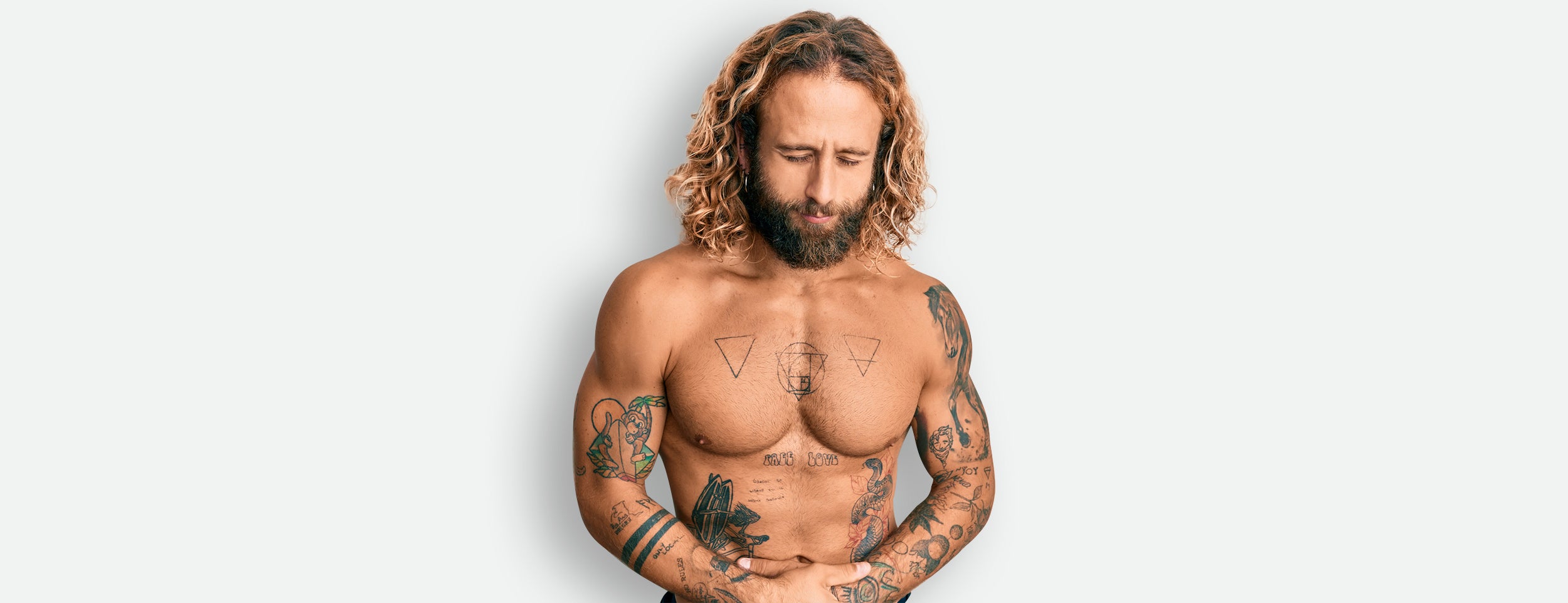
Minimizing chest tattoo pain is possible by choosing a less painful location, You can use effective techniques to alleviate discomfort and enhance your tattoo experience. We will discuss tips and tricks to help you minimize chest tattoo pain.
Choose a Less Painful Location
One way to minimize chest tattoo pain is by selecting a less painful location. The chest is one of the body's most sensitive areas, with the sternum and the area around the nipple being the most painful. Some areas of the chest are less painful than others. These include:
- Upper Chest: This area has more muscle and fat than the other parts of the chest, so there is more padding to cushion the tattoo needle.
- Side chest: The sides of the chest have more fat than the center, which means the pain will be less intense.
- Collarbone: This is a good option if you want a tattoo on your chest but don't want to endure too much pain. The collarbone has more flesh than the rest of the chest, which means it is less sensitive.
Numb the Area
Another method of minimizing chest tattoo pain is by using topical anesthetics. These creams or ointments are applied directly to the skin and help numb the area. Some examples of topical anesthetics include:
- Lidocaine: This is a common topical anesthetic used in tattooing to help numb the skin. It can be applied as a cream, gel, or spray.
- Benzocaine: This is another topical anesthetic that can help to numb the skin. It is often combined with other ingredients, such as lidocaine, to create a more effective numbing agent.
- Prilocaine: This is a prescription-only topical anesthetic used to numb the skin before medical procedures. It can provide longer-lasting pain relief compared to other topical anesthetics.
Pain Medication
If the pain becomes too intense, you can also consider taking pain medication to help manage it. Seeking medical advice before taking any medication is vital, especially if you have any pre-existing medical conditions. Some examples of over-the-counter pain medication that can help to manage pain include:
- Ibuprofen This is an anti-inflammatory medication that can help to reduce pain and swelling. It should be taken with food to reduce the risk of stomach upset.
- Acetaminophen:This is a pain reliever that can help to manage mild to moderate pain. It is safe to take with most medications but should be taken with caution if you have liver problems.

Numbing Products
Several numbing products are available on the market, and one of the most popular options is:
- Dr. Numb: A topical anesthetic used before tattooing. It contains 5% lidocaine for numbing for 2 hours.
Small Steps to Bigger Tattoos
Starting with a smaller design is an excellent way to minimize pain during tattooing. Here are some benefits of starting with a smaller tattoo:
- Less time under the needle: Smaller tattoos typically take less time to complete, which means less time under the needle and less pain.
- Easier to manage: Smaller tattoos are often more accessible, making the tattooing process less stressful overall.
Hydrate and Rest
Preparing your body for a chest tattoo can also help to minimize pain. This includes staying hydrated and getting enough rest. Dehydration can make the skin more sensitive, making the pain more intense. Getting enough rest can also help reduce stress and anxiety, making the pain feel more intense.
Chest Tattoo Pain Level: Aftercare Tips

When getting a chest tattoo, the pain level can be pretty intense. You can alleviate some of the discomfort that comes with proper aftercare techniques. We will discuss essential tips and tricks to help reduce chest tattoo pain.
Find an Experienced Artist
Choosing an experienced artist is crucial when it comes to chest tattoos. The chest is a sensitive area, and an inexperienced artist may not handle it correctly, leading to an unnecessarily painful experience or potential health risks. The following are a few reasons why finding an experienced artist matters:
- An experienced artist knows how to handle and alleviate the pain during tattooing.
- They also know how to ensure the ink is distributed evenly without causing damage to the skin.
- Experienced artists can give you advice on aftercare techniques, making the healing process as comfortable as possible.
Ask Your Artist for Advice
It’s essential to understand that the healing process plays a significant role in reducing chest tattoo pain. After getting a chest tattoo, following post-tattoo care recommendations from your artist is crucial. Here are some suggestions to help make the healing process easier:
- Always follow the recommended cleaning and moisturizing routine given by the artist.
- Avoid wearing tight clothing that will rub against the area, irritating.
- Avoid excess sunlight exposure, as it can damage the healing ink.
Be Proud of Your Tattoo
A chest tattoo is an emotional experience. Feeling proud of your tattoo can help reduce the pain, providing a sense of accomplishment and satisfaction. Show it off confidently, and do not allow the pain to deter you from feeling proud of your new piece.
Start Slow
In the first few days after receiving your chest tattoo, being careful and gentle with the area is essential. Here are some tips to help reduce pain during the first few days:
- Avoid introducing anything irritating, including clothing that rubs against the tattoo.
- Apply a cold compress on the tattoo to reduce swelling and discomfort.
- Ensure you do not touch the tattoo with dirty hands and refuse to let others touch your newly done piece.

Give It Time
The time it takes for a tattoo to heal can be different for everyone. Allowing ample healing time to avoid potential medical issues and reduce pain is essential. Some reasons to give your tattoo time to heal are:
- It will reduce scarring, which can be a potential cause of pain and irritation.
- It will help avoid infection, which can be a painful and costly experience.
Avoid Collarbones and Sternums
When getting a chest tattoo, placing the piece away from your collarbone and sternum is essential. These areas are susceptible and could lead to unnecessary pain. Here are a few reasons why avoiding your collarbone and sternum is crucial:
- These areas can be tricky spots to tattoo, causing more pain and requiring more healing time.
- Placing a tattoo directly over a bone can cause additional sensitivity and pain.
Conclusion
While it's true that chest tattoos can be among the most painful tattoos, there are many ways to manage the discomfort and make the experience more bearable. From choosing a less painful location to utilizing numbing products and taking breaks when necessary, numerous methods exist for minimizing pain. Remembering that everyone has pain tolerance levels and that getting a tattoo can be a very individual experience.
By understanding the science behind pain and seeking advice from your tattoo artist, you can ensure you're prepared for the process and achieve the desired outcome without fear or discomfort. A chest tattoo can be a meaningful and beautiful expression of yourself, and the rewards will outweigh the temporary pain experienced during the tattooing process.

